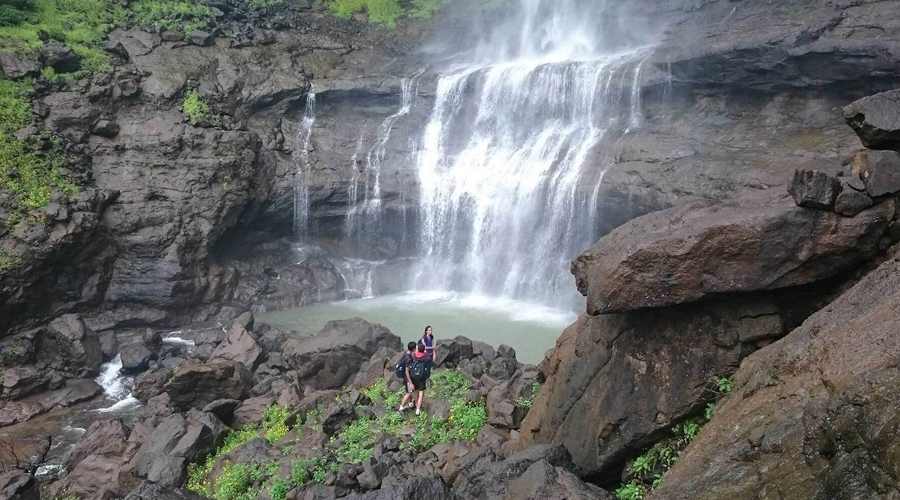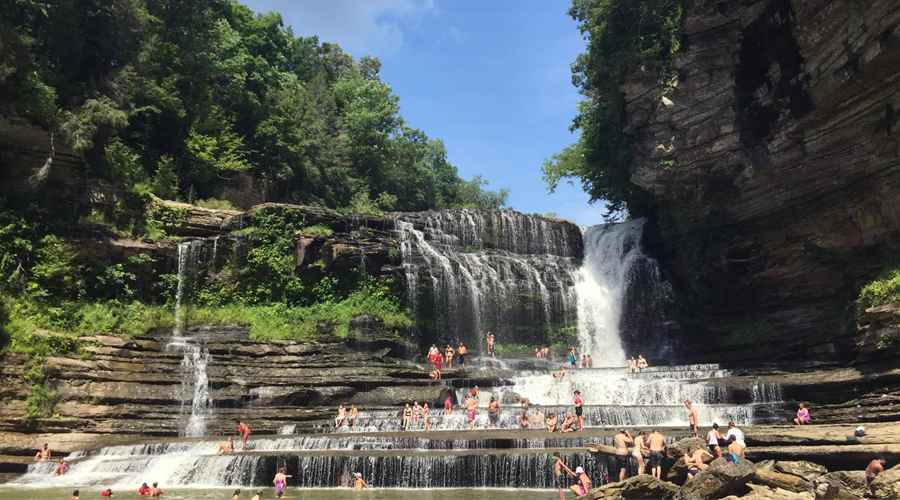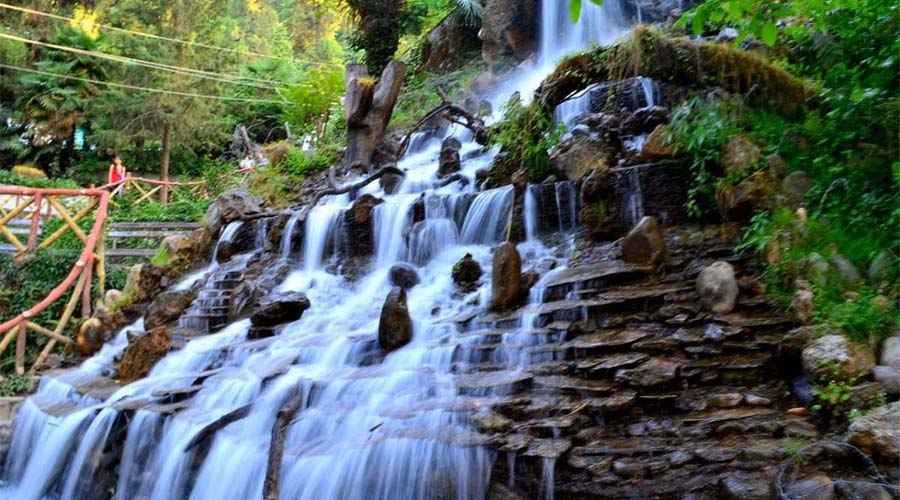The Sahyadri ranges of Maharashtra are home to countless natural wonders, but few are as mesmerizing—and as mysterious—as the Kataldhar Waterfall. Located near Lonavala, close to the historic Rajmachi Fort, Kataldhar is a gigantic seasonal waterfall revered by trekkers for its dramatic beauty and challenging terrain. Accessible only to those willing to embrace a heart-pounding trek through dense forests and slippery paths, Kataldhar remains one of the region’s best-kept secrets and a thrilling monsoon adventure.
Location and Geography
Kataldhar Waterfall plunges down the rugged cliffs of Ulhas Valley in Pune district, in the Indian state of Maharashtra. The waterfall can be found on the Rajmachi Trekking route, not far from the base villages of Udhewadi and Fanasrai. At over 350ft high with a 100ft overhang, the waterfall’s roaring cascade is awe-inspiring, especially during the peak monsoon months when the entire landscape vibrates with life.
What makes Kataldhar unique is also its cave—a colossal eye-shaped cavern beneath the falls, capable of sheltering up to 100 people. From inside this natural amphitheater, trekkers can gaze back at the imposing Rajmachi Fort, blending the magic of nature with echoes of the region’s rich history.
The Trekking Experience
Kataldhar isn’t your everyday picnic spot; reaching it is a true test of endurance. The trek begins from Fanasrai Village and winds through tangled jungle, offering a 9km journey (around 3 hours one way) characterized by steep descents, slippery rocks, and dense greenery. Unlike more popular Lonavala attractions, Kataldhar’s remote setting and challenging approach mean it’s often blanketed in peace—broken only by the thunderous roar of falling water.
The route itself is marked by local landmarks, such as the three mango trees on the Rajmachi route, which signal the descent into Ulhas Valley. Trekkers must be prepared for sudden weather changes and difficult terrain, especially during the rainy months when flash floods and slippery trails pose risks. It’s recommended to carry adequate water, wear sturdy footwear, and engage local guides to ensure safety. This trek is not suited for beginners and demands both physical fitness and an adventurous spirit.
Seasonal Splendor
One of the defining features of Kataldhar is its seasonality. The waterfall is truly alive only during the monsoon season (June-September), fed by the abundant rainfall that transforms the Sahyadris into a verdant paradise. At other times of year, Kataldhar’s flow slows or even dries up, revealing bare rock cliffs. For this reason, Kataldhar has become a sought-after destination for monsoon trekkers eager to witness nature’s raw power.
The monsoon also heightens the biodiversity of the region, with lush ferns, countless wildflowers, and the calls of exotic birds accompanying trekkers on their journey. Mist and spray from the falls paint the air, and the entire valley comes alive in a symphony of water and greenery.
Attractions and Activities
Kataldhar is more than just a waterfall—it’s a portal into the wilderness and heritage of the Sahyadris. Key experiences include:
- Cave Exploration: The vast natural cave beneath the falls is a favorite rest spot for tired trekkers and offers spectacular views of Rajmachi Fort directly ahead.
- Photography: With dramatic drops, swirling mists, and panoramic vistas, Kataldhar is a dream for photographers seeking pure monsoon magic.
- Historical Sites: The proximity to major sites like Rajmachi Fort, Kondhane Caves, and Bhairavnath Temple allows visitors to blend adventure with exploration of ancient heritage.
- Nature Immersion: The trek itself is a plunge into the wild, with untouched forests and a sense of isolation rare for sites near bustling Lonavala. Kataldhar feeds into the Ulhas River, local water bodies, and supports abundant flora and fauna.
Getting There
The nearest major railway station is Lonavala. From here, visitors proceed to Fanasrai Village, often using local taxis or buses, with the trek starting from this base. The waterfall sits around 95km from Mumbai and 70km from Pune, making it an accessible (if challenging) day-trip or weekend adventure for residents of both cities. Good planning, checking weather conditions, and going in groups or with experienced guides are all strongly recommended.
Camping options and basic accommodations are available near the trekking base, especially in Rajmachi village. However, due to the area’s challenging terrain and seasonal nature, most trekkers prefer to return to the city after their trek or camp only with organized groups.
Safety and Conservation
Due to its remote location and powerful monsoon flows, Kataldhar is best attempted only by fit and experienced trekkers. Flash floods and dangerous currents make swimming and rafting risky when the waterfall is full. Always prioritize safety, respect local wildlife, and avoid littering to preserve the delicate balance of the ecosystem.
Importantly, the trek to Kataldhar should never be attempted solo or without someone familiar with the route—dense forests and indistinct trails make it easy to get lost. Wearing full sleeves, track pants, and carrying mosquito repellent is advised to avoid bites and cuts in the thick foliage.
Why Visit Kataldhar Waterfall?
For those seeking something more than just a pretty view, Kataldhar Waterfall is an adventure of discovery. It blends the wild beauty of the Sahyadris, the thrill of demanding trekking, and the magic of Maharashtra’s monsoon. Whether you are drawn by the towering cascades, the secret cave, or the pulse of nature in rain-soaked forests, Kataldhar offers an escape into a hidden world rarely glimpsed by the casual traveler.
If you crave an offbeat treat and a physical challenge, make Kataldhar Waterfall your next destination—an experience that will live on in memory long after the water has faded to a quiet trickle.


